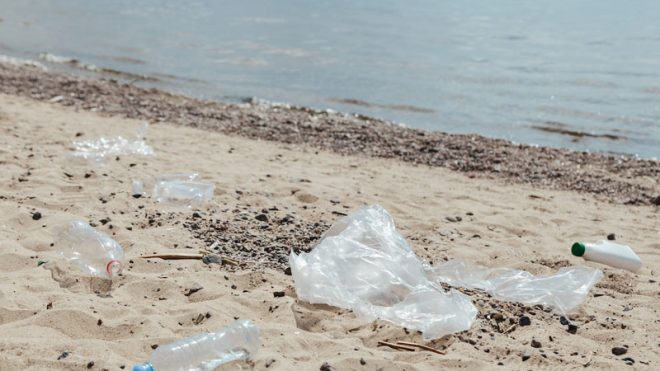Plastic pollution has become a global crisis with devastating consequences for our oceans and marine life. The presence of plastic in our seas is a consequence of various human activities, and it demands urgent action. In this blog post, we will explore how plastic finds its way into the sea and discuss practical steps that we can take to help reduce this alarming problem.
Sources of Plastic Pollution
Plastic enters the sea through a multitude of pathways, each contributing to the overall pollution. Some key sources include:
- Improper Waste Disposal Inadequate waste management systems and improper disposal of plastic waste lead to significant amounts of plastic ending up in rivers, which ultimately flow into the ocean.
- Littering: Discarded plastic items, such as bottles, bags, and packaging, left on beaches, streets, or other open spaces can be carried away by wind or rain, eventually reaching rivers and, eventually, the sea.
- Fishing Activities: Lost or abandoned fishing nets, ropes, and other gear, known as ghost gear, pose a severe threat to marine life. These items continue to entangle and trap marine animals, contributing to plastic pollution.
- Microplastics: Microplastics: Tiny particles that result from the breakdown of larger plastic items or are deliberately manufactured for use in products, are also a significant concern. They can be found in products like cosmetics, synthetic textiles, and even in the form of microbeads in some personal care products.
The Impact on Marine Life
Plastic pollution has far-reaching consequences for marine ecosystems. Marine animals often mistake plastic for food or become entangled in it, leading to injury, suffocation, and death. The ingestion of plastic can also disrupt their feeding patterns and cause internal injuries, affecting their overall health and reproductive capabilities. Furthermore, microplastics can accumulate in the food chain, posing a risk to human health when we consume contaminated seafood.
Steps to Reduce Plastic Pollution
Addressing the plastic pollution crisis requires collective action. Here are some practical steps individuals can take to contribute to the reduction of plastic waste:
- Reduce Single-Use Plastics: Minimize the use of single-use plastics, such as plastic bags, straws, bottles, and cutlery. Opt for reusable alternatives like cloth bags, stainless steel straws, and refillable water bottles.
- Recycle and Dispose Properly: Ensure proper recycling of plastic waste by segregating it from other types of waste. Familiarise yourself with local recycling guidelines and dispose of plastic waste responsibly.
- Support Sustainable Businesses: Choose products and brands that prioritise sustainable packaging and use eco-friendly materials. By supporting businesses that actively work towards reducing plastic waste, you contribute to the demand for environmentally friendly alternatives. At BinIt we are proud supporters of Plastic Bank and through out partnership, help to prevent 10,000 plastic bottles from entering the ocean.
- Participate in Beach and River Cleanups: Join or organise community clean-up events to remove plastic and other waste from beaches and riverbanks. By actively participating, you can help prevent plastic from entering the sea and protect marine life.
- Spread Awareness: Educate others about the harmful effects of plastic pollution on our oceans and marine life. Share information, engage in discussions, and encourage friends and family to adopt more sustainable practices.
The problem of plastic pollution in our oceans is a global challenge that requires immediate attention. By understanding how plastic finds its way into the sea and taking proactive steps to reduce our plastic consumption and waste, we can make a significant difference. Every action, no matter how small, contributes to the collective effort of preserving our oceans for future generations. Together, we can mitigate the impact of plastic pollution and protect the precious ecosystems that rely on healthy seas.
At BinIT we believe that sustainability and protecting our Oceans from plastic waste is of the utmost importance. We are dedicated to making high-quality, eco-friendly refuse sacks made of durable 100% recycled LDPE material. This material can be further recycled where facilities allow and help us to be part of the change for a greener future.

